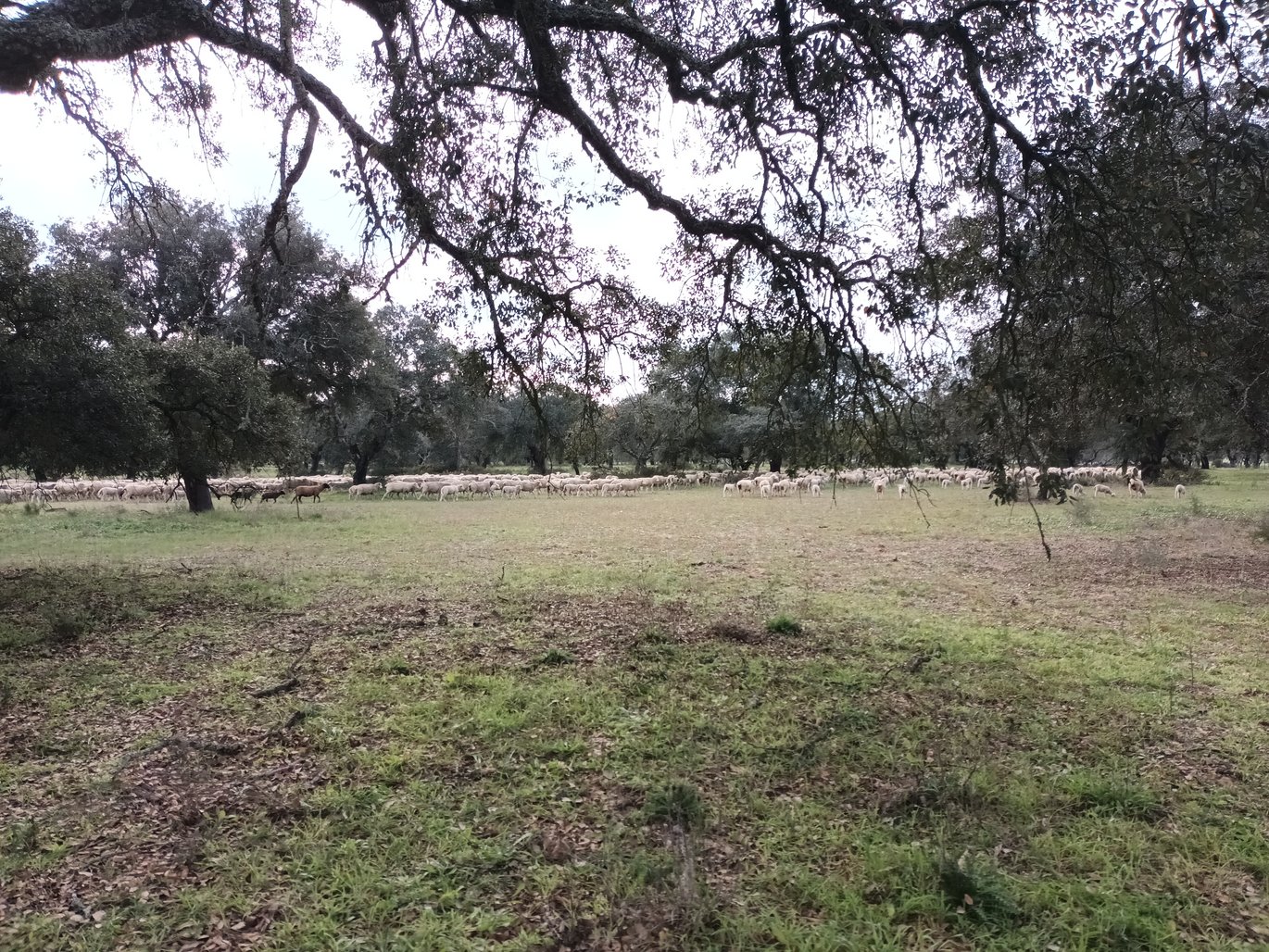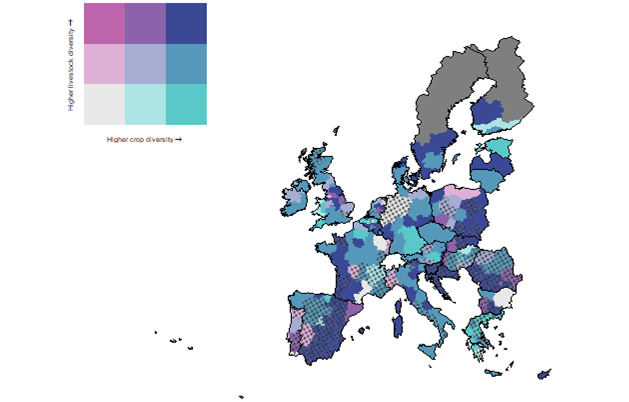Can specialised farms be part of mixed agricultural landscapes?
Circularity as well as diversity are important when characterizing mixed agricultural landscapes. This may also help to explain why mixed agricultural landscapes can actually emerge from combinations of economically specialised farms.


Catherine Pfeifer, Linn Schaan and Florian Hediger from FiBL have revisited the approach developed earlier in MIXED to classify agricultural landscapes into mixed and non- mixed (see ‘MIXED highlight’ or the full report) based on data from Eurostat (Livestock statistic – ef_livestock and land use statistic ef_landuse retrived from https://ec.europa.eu/eurostat/web/main/data/database ). The previous work classified administrative areas of Europe into mixed and non-mixed agricultural landscapes based on the diversity and intensity of agricultural production. In this new approach, a new circularity variable was included – a simplified gross nitrogen balance that assessed the extent to which nitrogen requirements for crop production can be met using locally available manures. Thus, in addition to ‘diversity of crops’ and ‘diversity of livestock’ the new classification of the agricultural landscapes also includes ‘circularity’ for categorising an agricultural landscape as ‘mixed’.
Values for crop diversity, livestock diversity and circularity were grouped into low medium and high. When all three indicators scored high for a landscape, then this landscape is considered as mixed. In Figure 1, these mixed landscapes are the dark blue ones with the point pattern. This new approach to landscape classification enhances precision and adaptability by evaluating landscapes individually, allowing for tailored management strategies that better respond to each landscape's unique characteristics and needs.
The researchers have also investigated the underlying farm dynamics of individual farms in mixed landscapes. They found that mixed agricultural landscapes can emerge from three main dynamics:
• combinations of mixed farms, specialised crop farms and specialised livestock farms,
• combinations of specialised farms solely,
• farms specialised in permanent crops.
By collaborating and exchanging resources, like manure for feed, specialized farms contribute to the emergence of mixed landscapes.
Also this suggests that farms specialized in permanent crops based on their income, might combine this activity with livestock, such as grazing sheep or goats under olive trees, yet the income from the livestock is marginal, and therefore these farms are not considered mixed. These results indicate that there is a need to develop a new more detailed farm typology for Europe that, rather than economic terms as being used in Eurostat, is based on biophysical criteria, and which accounts for how farmers combine crops, livestock and trees, thus the level of crop-livestock interaction at farm level through the among of manure that is available for crops.
